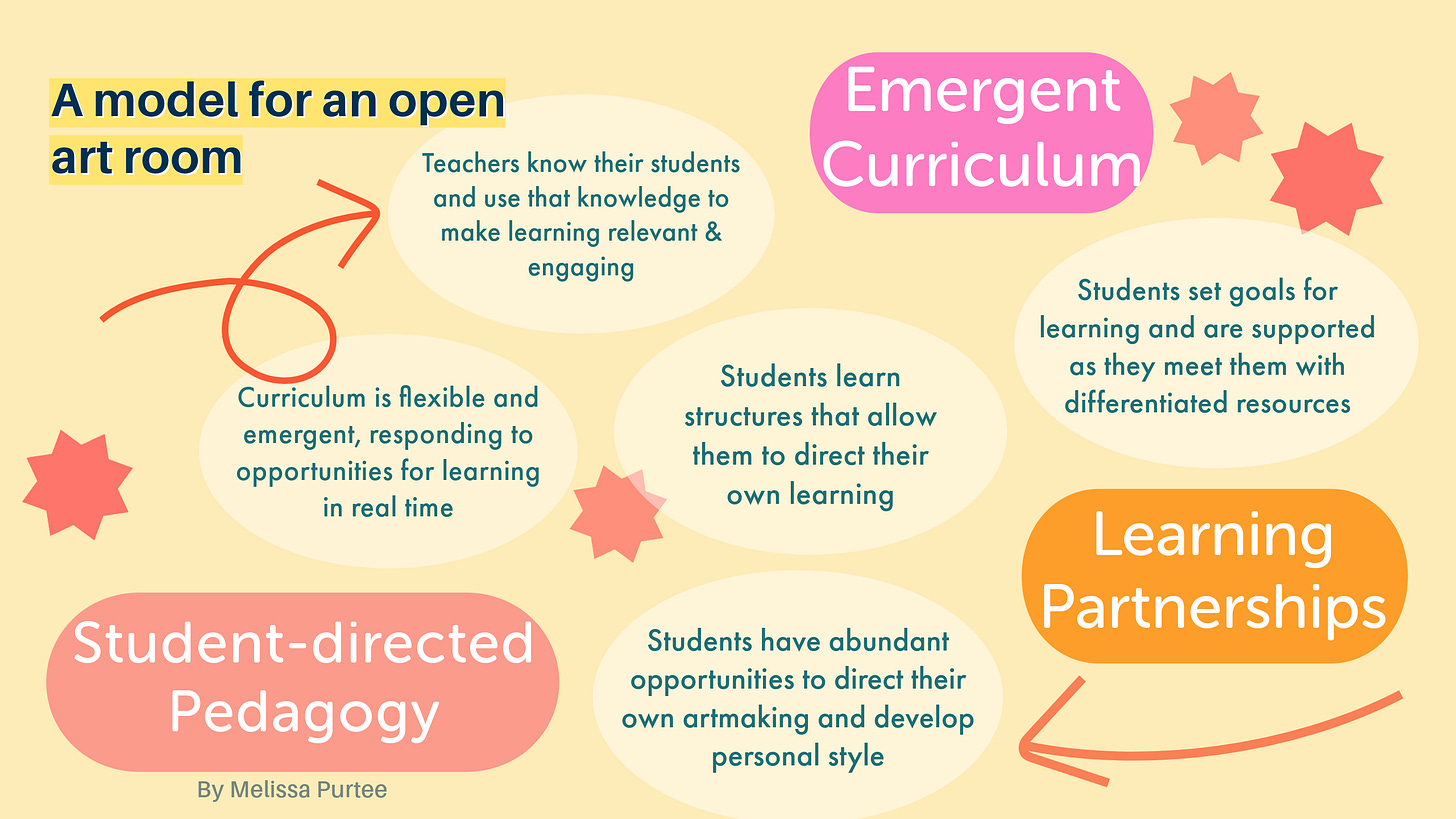I co-wrote The Open Art Room seven years ago. I’m proud of that book and the one that came next, Making Artists, published in 2021. Both are full of excellent content, including lesson plans and great explanations of pedagogy. However, my teaching practice and philosophy have (and always will) continue to evolve. I want to share an updated, big-picture view of what my classroom looks like, and a bit about how I got here.
A lot is going on in the above infographic, which shows a bird’s eye view of my philosophy and current practice. I could write a whole third book about it! For this post, I want to focus on Learning Partnerships, which are integral to TAB and my teaching.
In 2020 I started a two-year fellowship through my district’s Office of Equity Affairs that was focused on the work of Zaretta Hammond - specifically, her book Culturally Responsive Teaching and the Brain. I was blown away by how her work connected to TAB and couldn’t recommend her book more highly.
The idea that inspired me the most was what Hammond calls “Learning Partnerships”. The concept is based on a teacher-student partnership - as in both the teacher and students sharing responsibility for learning. This relationship, if it is to be successful, has to be grounded in respect, empathy, and understanding. Understanding involves knowing who the student is as a person as well as their academic strengths and weaknesses but also seeking out information about life experiences that are different from our own - which, to me, means learning about how others might experience the world and the challenges and strengths they bring to the classroom with them. Learning Partnerships, once established, can be leveraged to help students do high-level things like master increasingly challenging tasks and learn from feedback. When we do this students know we care AND we will ask them to do challenging things with support (Hammond calls this being a “warm demander”).
Learning partnerships are exactly what TAB teachers have to form to support students as we ask them to direct their own art-making. To do this, Hammond writes that teachers need to cultivate the capacity for “self-efficacy” in students, which refers to the belief in one’s ability to complete tasks needed to achieve goals successfully - again, an essential skill for TAB students. Part of building self-efficacy is teaching students language to talk about their learning. Doing this was a game-changer for me. I thought about what I wanted students to do during their time in art and developed a list of four different types of work: learning, formal projects, exploring, and “work in my style”. I defined each type of work and taught them to students. Once this shared language was established we - me with students and students with each other - could have productive conversations about what types of learning students were engaged in and work on goal setting that supports their whole art-making process.
Resources:
I’ve written in more detail about Hammond’s work and TAB here
I wrote about about the types of artwork I defined and taught here
I also wrote about a form I developed to teach these types of work to students here
I wrote about goal-setting here but look out for more ideas about this before the start of next school year.
What should I write about next - goal setting, emergent curriculum, or structures that support student-directed learning?





I would love to see/read examples of the 4 types of work you refer too!